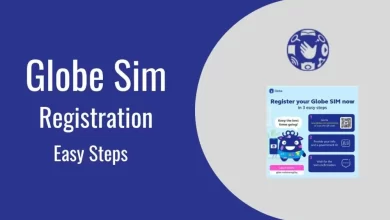Remote I-9 and E-Verify: An Employer's Guide

Managing employee documentation is crucial for businesses, especially with the rise of remote work. Ensuring compliance with federal requirements like the I-9 form and E-Verify can be challenging but essential. Employers need to verify I-9 forms to confirm their employees’ eligibility to work in the United States. This guide will help you understand these processes and navigate them efficiently.
What is the I-9 Form?
The I-9 form is a document employers use to verify the identity and employment authorization of individuals hired for employment in the United States. Every employer must complete an I-9 form for each new hire, regardless of their nationality or citizenship status.
Completing the I-9 form involves two main steps: reviewing the employee’s documents and completing the form itself. Employees must present valid documentation that proves their identity and authorization to work, such as a passport or driver’s license and Social Security card. Employers are responsible for examining these documents to ensure they appear genuine.
The I-9 form serves as a foundational compliance document for employers. Not only does it help prevent unauthorized employment, but it also protects the employer from potential legal issues. Employers who fail to comply with I-9 requirements can face substantial fines and penalties, making it essential to understand and correctly implement this process.
An Introduction to E-Verify
E-Verify is an online system that allows employers to confirm their employees’ eligibility to work in the United States. It compares information from an employee’s I-9 form to records available to the Department of Homeland Security and the Social Security Administration.
Using E-Verify is voluntary for most employers but mandatory for some, such as federal contractors. It provides an extra layer of security by detecting document fraud and ensuring that the employee’s information matches government records.
E-Verify enhances the verification process by adding an automated layer of validation. This system is especially useful in industries prone to higher risks of unauthorized employment. By integrating E-Verify into their hiring processes, employers can significantly reduce the likelihood of hiring individuals who are not authorized to work in the U.S.
Why Employers Must Use E-Verify?
Employers use E-Verify to ensure compliance with federal employment laws and reduce the risk of hiring unauthorized workers. This system helps maintain a legal workforce and protects businesses from potential fines and legal issues.
Additionally, using E-Verify can enhance a company’s reputation. It is committed to lawful hiring practices and can build trust with customers, partners, and employees. For some industries, using E-Verify is a competitive advantage.
Beyond compliance and reputation, E-Verify can streamline the hiring process. By quickly confirming an employee’s eligibility, employers can avoid lengthy delays and focus on integrating new hires into their teams. This efficiency saves time and reduces the administrative burden on HR departments.
Step-by-Step Guide to Using E-Verify
Using E-Verify involves several steps. First, employers must enroll in the E-Verify program and sign a memorandum of understanding with the Department of Homeland Security. Once enrolled, they can begin using the system to verify new hires.
After hiring an employee and completing the I-9 form, the employer enters the employee’s information into the E-Verify system. The system then compares this data against government records. If the information matches, the employee is confirmed as authorized to work. If there is a mismatch, the employer and employee must take steps to resolve the issue.
Employers should ensure that their HR staff is trained in using E-Verify. This training should cover the enrollment process, how to enter employee information accurately, and how to handle cases requiring further verification. Proper training helps avoid common errors and ensures that the verification process is smooth and efficient.
How Long Does It Take to Get E-Verify Results?
E-Verify results are typically returned within seconds. Most queries result in an immediate confirmation of employment eligibility. However, further action may be required in some cases, which can take a few days to resolve.
If additional verification is needed, the system will notify the employer, who must then inform the employee. The employee has the opportunity to correct any discrepancies, which may involve visiting a government office or providing additional documentation.
The quick turnaround time for E-Verify results is a significant advantage for employers. It allows them to proceed with the hiring process without unnecessary delays. However, employers must be prepared to handle situations where further verification is needed, ensuring that employees understand the process and have the support they need to resolve any issues.
Retention Requirements for Employee I-9 Forms
Employers must retain I-9 forms for all current employees and for former employees for either three years after the date of hire or one year after the date of employment termination, whichever is later.
Proper retention and storage of I-9 forms are crucial for compliance. Employers can keep these forms in paper, microfilm, microfiche, or electronic formats. It is essential to have these forms readily accessible in case of an audit by government agencies.
Many employers opt for electronic storage of I-9 forms to simplify the retention process. This approach allows for easy retrieval and reduces the physical space needed for paper records. However, employers must ensure that their electronic storage systems comply with federal regulations and are secure from unauthorized access.
Is a New I-9 Form Needed for Rehired Employees?
Whether a new I-9 form is needed for rehired employees depends on several factors. If an employee is rehired within three years of the original hire date and the original I-9 form is still valid, the employer can use the same form without completing a new one.
However, if the original I-9 form is no longer valid or if the employee’s work authorization has changed, a new I-9 form must be completed. This ensures that the rehired employee’s eligibility to work is up to date-and compliant with current regulations.
Employers must carefully track all employees’ employment status and authorization, especially those who are rehired. Maintaining accurate records and promptly updating I-9 forms as needed can help avoid compliance issues and ensure a smooth rehiring process.
Conclusion
Employers must understand and correctly implement the I-9 form and E-Verify processes. These tools help ensure a legal workforce, maintain compliance with federal laws, and protect businesses from potential legal issues. By staying informed and following best practices, employers can effectively manage employee documentation and contribute to a fair and lawful employment environment.





